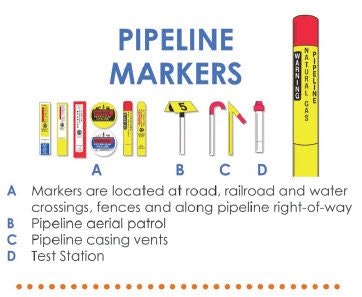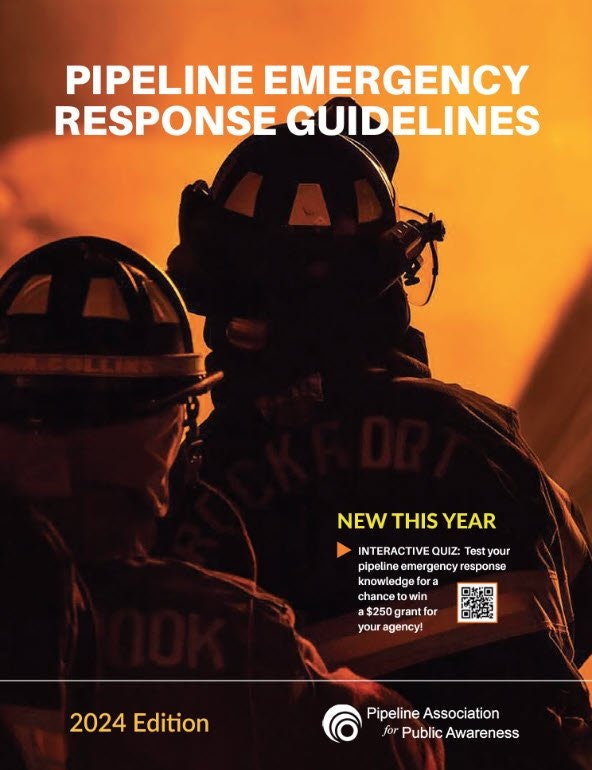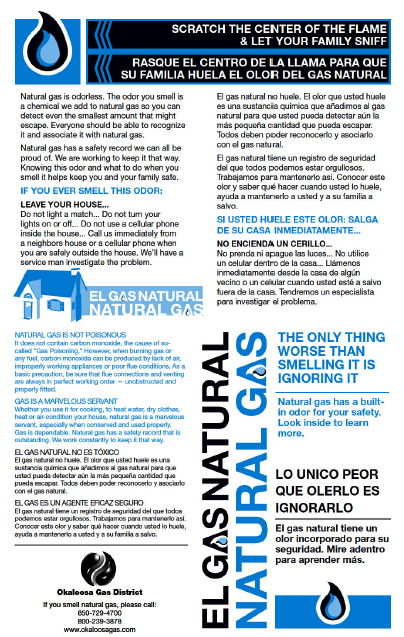First Responder Safety Information
Emergency Responders Play Key Role in Okaloosa Gas District Safety Effort
Every day, over two million miles of underground pipeline safely transport and distribute natural gas to millions of consumers in the United States. From design and construction to operations and maintenance, natural gas pipeline companies and utilities like Okaloosa Gas District set high standards to keep this system incident free. A key component of this safety commitment involves having an emergency preparedness plan in place and partnering with local emergency responders. “When responding to a natural gas pipeline emergency, it’s critical that we all work together to keep residents safe, especially since emergency officials may be the first ones on the scene,” explains Chris Hiestand, Vice President of Operations for the District.
To better coordinate response efforts, Okaloosa Gas District wants to remind emergency officials of the proper procedures to follow if dispatched to a natural gas leak or incident.
“Our employees go through rigorous training on both safety inspection procedures and emergency preparedness,” says Hiestand. “We have a plan in place in case of a natural gas incident, and we need our partners and neighbors, including our local emergency officials, to be familiar with it as well.”
Although Okaloosa Gas District holds timely briefings to train emergency officials and share our emergency response plan, you may request a copy of this plan at any time by contacting Okaloosa Gas District at 850-729-4700. You can also call this number for information about upcoming training sessions and events.
In the meantime, here are some simple safety dos and don’ts for emergency officials to keep in mind if dispatched to a pipeline incident (keep in mind that these tips are general guidelines; they do not replace any steps outlined in an emergency response plan):
Do…
- Call us at 850-729-4700 if you are the first to respond to the incident.
- Protect the public by evacuating and securing the area and providing traffic control and emergency services if necessary.
- Let escaping gas burn if on fire.
- Use only intrinsically safe equipment.
- Use a combustible gas indicator to determine the location of the leak.
Do not…
- Operate any of our pipeline system equipment.
- Turn vehicles or equipment on or off or use a device that might create a spark, like a cell phone, flashlight, etc.
Enforcing Chapter 556 helps make Florida's communities safer
Underground facilities that deliver gas, electric, internet and water are safe. But when they are ruptured by a shovel or digging equipment, the consequences can be inconvenient - even deadly - resulting in major road closings, evacuations, and no communications. Stopping preventable digging accidents from ending like this is the purpose behind the Underground Facility Damage Prevention and Safety Act, Chapter 556, Florida Statutes.
Who can enforce Chapter 556?
Florida's State Fire Marshal or its agents (fire chief of the special district, municipality, or county), local or state law enforcement officers, government code inspectors, and code enforcement officers.
What can you do?
When you see digging, make sure the excavator has a valid ticket, that marks are present and that digging did not start too early. With the new $2,500 enhanced penalty for violations involving PHMSA-regulated lines gas company-representatives may contact you to issue a citation.
For more information, please call 850-729-4700.

Pipeline Markers
Markers purposely indicate only the general, not exact, location of pipelines. Markers also do not indicate the depth or number of pipelines in the area. To identify operators of major gas pipelines in your area and view maps with the general locations of these pipelines, visit the National Pipeline Mapping System website at https://www.npms.phmsa.dot.gov/
Color Codes for Underground Facilities
The American Public Works Association designated uniform color codes for underground facilities. The chart shows the colors and designated facilities.

Utility flag marker colors and their meaning:
- Red: Electric
- Yellow: Gas, Oil, Steam or Petroleum
- Orange: Communications Systems
- Blue: Potable Water
- Purple: Reclaimed Water Irrigation
- Green: Sewer and Drain Lines
- White: Proposed Excavation
- Pink: Temporary Surveying
Pipeline Emergency Response Guidelines
Check out the latest edition of Pipeline Emergency Response Guidelines. It's easy to read and download, please share the information with your colleagues.
Download Emergency Response Guidelines
Ask Us About FREE Pipeline Safety Training
Pipeline Safety Training is available to all public officials, public safety and emergency first responders, excavators and other utility contractors. For more information about seminars and training opportunities, call Okaloosa Gas District at 850-729-4700
Request Natural Gas Safety Training
Additional Resources
- Pipeline Awareness
- INGA - Pipelines 101
- American Gas Association
- Sunshine 811
- Common Ground Alliance
- Office of Pipeline Safety
- National Fire Protection

Scratch & Sniff Natural Gas Pamphlet
To become familiar with the smell of natural gas, stop by our office for a FREE scratch and sniff pamphlet to share with your employees.
Download Natural Gas Safety Pamphlet